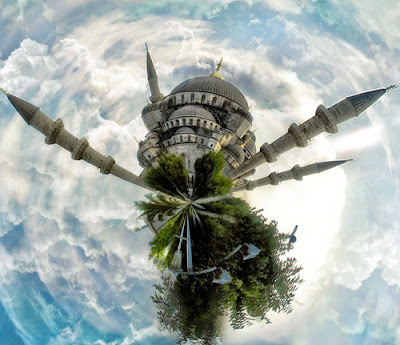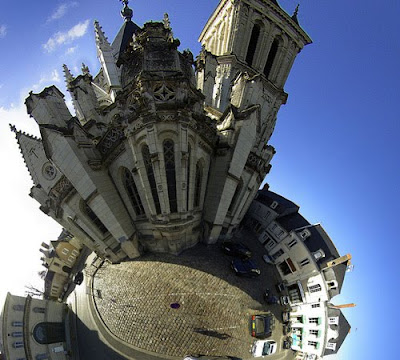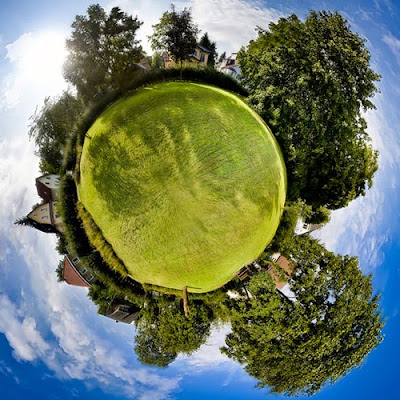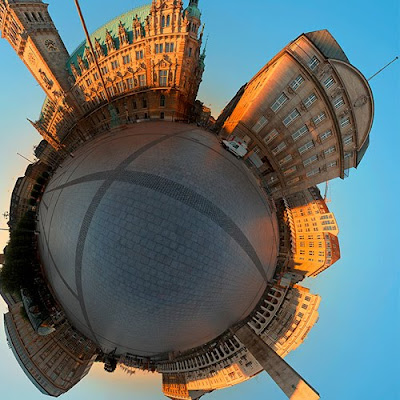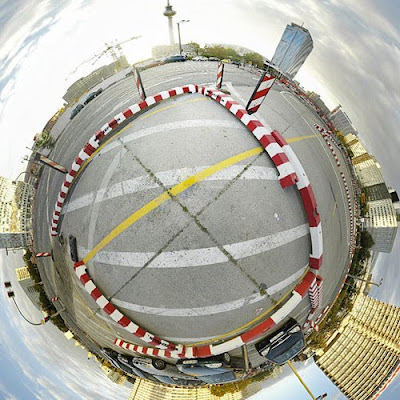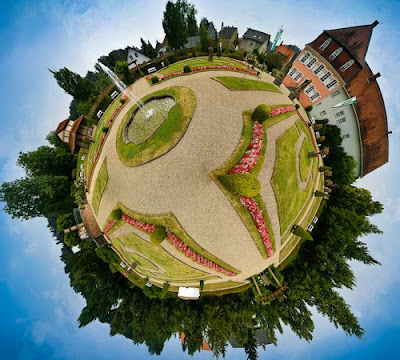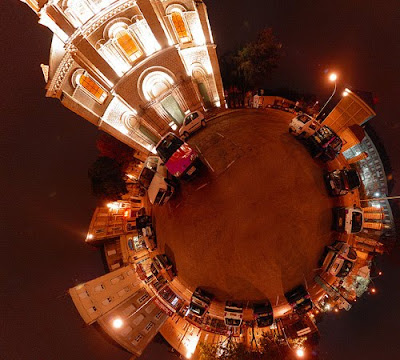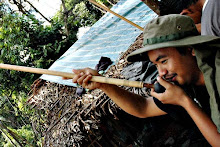





In image processing, computer graphics, and photography, high dynamic range imaging (HDRI or just HDR) is a set of techniques that allow a greater dynamic range of luminances between the lightest and darkest areas of an image than standard digital imaging techniques or photographic methods. This wider dynamic range allows HDR images to more accurately represent the wide range of intensity levels found in real scenes, ranging from direct sunlight to faint starlight.[1]
The two main sources of HDR imagery are computer renderings and merging of multiple photographs, which in turn are known as low dynamic range (LDR)[2] (also called standard dynamic range (SDR)[3]) photographs.
Tone mapping techniques, which reduce overall contrast to facilitate display of HDR images on devices with lower dynamic range, can be applied to produce images with preserved or exaggerated local contrast for artistic effect.
In photography, dynamic range is measured in EV differences (known as stops) between the brightest and darkest parts of the image that show detail. An increase of one EV or one stop is a doubling of the amount of light.
Dynamic Ranges of Common Devices
Dynamic Ranges of Common Devices Device Stops Contrast
Computer LCD Display 9.5 700:1
DSLR camera (1Dmk2) 11[4] 2048:1
Print film 7[4] 128:1
High-dynamic-range photographs are generally achieved by capturing multiple standard photographs, often using exposure bracketing, and then merging them into an HDR image. Digital photographs are often encoded in a camera's raw image format, because 8 bit JPEG encoding clips the camera's possible dynamic range (and also introduces undesirable effects due to the lossy compression).
Any camera that allows manual over- or under-exposure of a photo can be used to create HDR images.
Some cameras have an auto exposure bracketing (AEB) feature with a far greater dynamic range than others, from the 3 EV of the Canon EOS 40D, to the 18 EV of the Canon EOS-1D Mark II.[5]
The Pentax K-7 DSLR has an HDR mode which captures an HDR image and then outputs (only) a tone-mapped JPEG file.[6]
Dynamic range for each ISO setting of the 1Dmk2[7] ISO Dynamic Range (Stops)
50 11.3
100 11.6
200 11.5
400 11.2
800 10.7
1600 9.7
3200 8.7
[edit] Mathematics
Contrast ratio = 2(EV difference)
EV difference = log2(Contrast ratio)
The fact that an increase of 1 EV indicates a doubling of light means that EV is often represented on a base-2 logarithmic scale.
The human perception of brightness is well approximated by a Steven's power law,[8] which over a reasonable range is close to logarithmic, as described by the Weber–Fechner law, which is one reason that logarithmic measures of light intensity are often used.[9][10]
[edit] Representing HDR images on LDR displays
[edit] Contrast reduction
HDR images can easily be represented on common LDR devices, such as computer monitors and photographic prints, by simply reducing the contrast, just as all image editing software is capable of doing.
[edit] Clipping and compressing dynamic range
Scenes with high dynamic ranges are often represented on LDR devices by cropping the dynamic range, cutting off the darkest and brightest details, or alternatively with an S conversion curve that compresses contrast progressively and more aggressively in the highlights and shadows while leaving the middle portions of the contrast range relatively unaffected.
An example of a rendering of an HDRI tone-mapped image in a New York City nighttime cityscape.
[edit] Tone mapping
Main article: Tone mapping
Tone mapping reduces the dynamic range, or contrast ratio, of the entire image, while retaining localized contrast (between neighboring pixels), tapping into research on how the human eye and visual cortex perceive a scene, trying to represent the whole dynamic range while retaining realistic color and contrast.
Images with too much tone mapping processing have their range over-compressed, creating a surreal low-dynamic-range rendering of a high-dynamic-range scene.
[edit] Comparison with traditional digital images
Information stored in high dynamic range images typically corresponds to the physical values of luminance or radiance that can be observed in the real world. This is different from traditional digital images, which represent colors that should appear on a monitor or a paper print. Therefore, HDR image formats are often called "scene-referred", in contrast to traditional digital images, which are "device-referred" or "output-referred". Furthermore, traditional images are usually encoded for the human visual system (maximizing the visual information stored in the fixed number of bits), which is usually called "gamma encoding" or "gamma correction". The values stored for HDR images are often gamma compressed (power law) or logarithmically encoded, or floating-point linear values, since fixed-point linear encodings are increasingly inefficient over higher dynamic ranges.[11][12][13]
HDR images often use a higher number of bits per color channel than traditional images to represent many more colors over a much wider dynamic range. 16-bit ("half precision") or 32-bit floating point numbers are often used to represent HDR pixels. However, when the appropriate transfer function is used, HDR pixels for some applications can be represented with as few as 10–12 bits for luminance and 8 bits for chrominance without introducing any visible quantization artifacts.[11][14]
[edit] History of HDR photography
[edit] 1850
The idea of using several exposures to fix a too-extreme range of luminance was pioneered as early as the 1850s by Gustave Le Gray to render seascapes showing both the sky and the sea. Such rendering was impossible at the time using standard techniques, the luminosity range being too extreme. Le Gray used one negative for the sky, and another one with a longer exposure for the sea, and combined the two in a single picture in positive.[15]
[edit] 1930
High dynamic range imaging was originally developed in the 1930s and 1940s by Charles Wyckoff. Wyckoff's detailed pictures of nuclear explosions appeared on the cover of Life magazine in the mid 1940s. Wyckoff implemented local neighborhood tone remapping to combine differently exposed film layers into one single image of greater dynamic range.
[edit] 1980
The desirability of HDR has been recognized for decades, but its wider usage was, until quite recently, precluded by the limitations imposed by the available computer processing power. Probably the first practical application of HDRI was by the movie industry in late 1980s and, in 1985, Gregory Ward created the Radiance RGBE image file format which was the first (and still the most commonly used) HDR imaging file format.
Wyckoff's concept of neighborhood tone mapping was applied to video cameras by a group from the Technion in Israel led by Prof. Y.Y.Zeevi who filed for a patent on this concept in 1988.[16] In 1993 the first commercial medical camera was introduced that performed real time capturing of multiple images with different exposures, and producing an HDR video image.[17]
Modern HDR imaging uses a completely different approach, based on making a high-dynamic range luminance or light map using only global image operations (across the entire image), and then tone mapping this result. Global HDR was first introduced in 1993[18] resulting in a mathematical theory of differently exposed pictures of the same subject matter that was published in 1995 by Steve Mann and Rosalind Picard.[19] In 1997 this global-HDR technique of combining several differently exposed images to produce a single HDR image was presented to the computer graphics community by Paul Debevec.
This method was developed to produce a high dynamic range image from a set of photographs taken with a range of exposures. With the rising popularity of digital cameras and easy-to-use desktop software, the term HDR is now popularly used to refer to this process. This composite technique is different from (and may be of lesser or greater quality than) the production of an image from a single exposure of a sensor that has a native high dynamic range. Tone mapping is also used to display HDR images on devices with a low native dynamic range, such as a computer screen.
[edit] 1996
Steve Mann developed and patented the global-HDR method for producing digital images having extended dynamic range at the MIT Media Laboratory.[20] Mann's method involved a two-step procedure: (1) generate a single floating point image array by global-only image operations (operations that affect all pixels identically, without regard to their local neighborhoods); and then (2) convert this image array, using local neighborhood processing (tone-remapping, etc.), into an HDR image. The image array generated by the first step of Mann's process is called a "lightspace image", "lightspace picture", or "radiance map". Another benefit of global-HDR imaging is that it provides access to the intermediate light or radiance map, which has been used for computer vision, and other image processing operations[20].
[edit] 1997
In 1997 this technique of combining several differently exposed images to produce a single HDR image was presented to the public by Paul Debevec.
[edit] 2005
A tone-mapped rendering of an HDR photo taken in Ithaca, New York
Photoshop CS2 introduced the Merge to HDR function.[21]
In many ways, Photoshop CS2's HDR function is the holy grail of dynamic range. With properly shot and processed files it allows photographers to easily create images that were previously impossible, or at least very difficult to accomplish. But, good as it is, like a gun or nuclear power, it can be a force for evil as well as good.
Not every image needs to have 10-15 stops of dynamic range. In fact, most photographs look quite nice, thank you very much, with the 5-7 stops of dynamic range that we're used to. I fully expect to see some really silly if not downright ugly images in the months ahead, as photographers get their copies of Photoshop CS2 and start discovering what the HDR function is capable of.
But, as with all such tool [sic], in the hands of sensitive artists and competent craftsmen, I'm sure that we will start to be shown the world in new and exciting ways.
– Michael Reichmann , Luminous Landscape[








